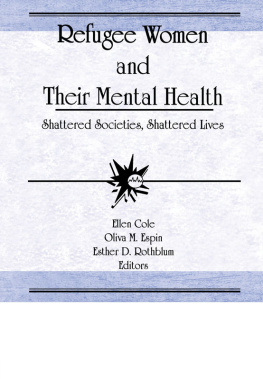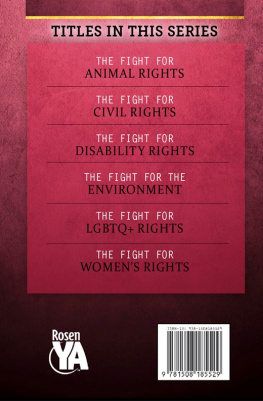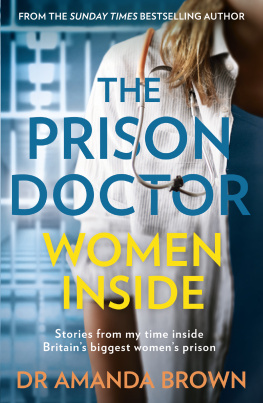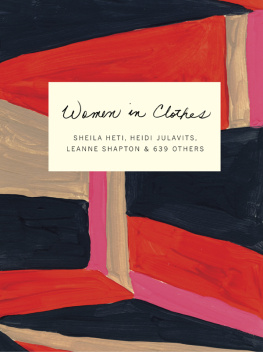
FatA Fate Worse Than Death? Women, Weight, and Appearance
FatA Fate Worse Than Death? Women, Weight, and Appearance
Ruth Raymond Thone

1997 by The Haworth Press, Inc. All rights reserved. No part of this work may be reproduced or utilized in any form or by any means, electronic or mechanical, including photocopying, microfilm, and recording, or by any information storage and retrieval system, without permission in writing from the publisher.
The Haworth Press, Inc., 10 Alice Street, Binghamton, NY 13904-1580
This edition by Routledge:
Routledge
Taylor and Francis Group
270 Madison Avenue
New York, NY 10016
Routledge
Taylor and Francis Group
2 Park Square, Milton Park
Abingdon, Oxon OX14 4RN
Selected excerpts from Making Peace with Food by Susan Kano. Copyright (c) 1989 by Susan Kano. Reprinted by permission of HarperCollins, Inc.
Cover design by Marylouise . Doyle.
Library of Congress Cataloging-in-Publication Data
Thone, Ruth Raymond.
Fata fate worse than death? : women, weight, and appearance / Ruth Raymond Thone.
p. cm.
Includes bibliographical references and index.
ISBN 0-7890-0178-0 (alk. paper)
DOI: 10.4324/9781315820538
1. ObesityPsychological aspects. 2. ObesitySocial aspects. 3. Overweight women. 4. Body image. I. Title.
RC552.025T48 1997
616.3980019dc21
974041
CIP
About The Author
Ruth Raymond Thone is a freelance writer, teacher, and long-time community activist in her local community and in progressive politics. The author of the books Women and Aging: Celebrating Ourselves (Haworth Press, 1992) and Being Home (1993), she is also published in several national publications. Ms. Thone is a national leader of workshops on women and aging; self-esteem; women, weight, and appearance; writing; and values realization. She is a frequent commentator on Nebraska Public Radio and is a Nebraska Humanities committee scholar/speaker.
Preface The Beginning of a Journey
The morning newspaper headline reads: Think Big to Camouflage Weight Gain. A story in the section devoted to what is considered soft newsentertainment, religion, art, fashion, women, housingbegins with the words Lumpy bodies, take note. Its advice is how to take off the extra pounds put on over the holidays and what to wear until the fat is trimmed.
I am beyond mad and am now full of rage: Is my lumpy body offensive to the obviously petite writer of this column? She looks perkytherefore petite in my eyesin the shoulders-and-head photo that accompanies her words of wisdom. Why should I conform myself to what she and millions of others choose to look at? How do they arrive at what is pleasing and what is gross?
Trimming the fat brings images to mind of the butcher, with a very sharp knife, slicing the fat off lamb chops or steak I order for my husbands supper.
This is not the first time Ive been enraged at the butchery and torture practiced on womens bodies in order for us to be what others want to look at. Nor is my morning rage unusual. It is, however, acerbated by the fact that this is January, resident month of shaping up. Weight loss, body beautification, inside house repairs, increased savings, and attempts at sobriety, are all things resolutely chosen around the New Year.
I have already withstood, beginning in January 1995, the murmurs (shouts?) of the governments War on Fat. Based on statistics that show Americans (who live in the United States) weigh more, the Surgeon Generals office is preparing a national assault on fat. I have yet to hear its definition of fat or how they are going to arrange this national weight loss. Of course, it will address us in the name of health.
In a rather intense New Years discussion at my house, my husband cloaked his displeasure with my no-longer-size-10 body and the fact that I was eating potato chips, in too-fierce insistence that he was only concerned with my high cholesterol. Later, one of his arguments went like this: You know what your sister died of. After a moment of stunned silence, I responded, Yes, she died of breast and lymph node cancer. His reply: Well, her weight was part of all that.
Poor Jane. Poor me. I look in my own eyes, at four years older than the 60 at which she died, very much like my oldest sister. She had a 22-inch waist as a young woman, we used to brag, but spent her entire adult life as a large, heavy woman. My familys definition of Jane began with what she weighed or what she looked like at any moment. Her story comes later. What I am living is part of that family legacy; that is, the rule that it is not okay to weigh more than average.
After several calls to my doctors office, in which I asked the question if breast cancer occurs more often in heavy women, I finally heard a receptionist repeat to me this message from a medical staff person: There is a connection between obesity and cancer. The receptionist did not know the office definition of obesity. With that, I gave up the quest to have a medical answer to what I considered my husbands idiotic assertion, at least for that day.
In my cancer files is a lengthy Ms. section titled The Politics of Cancer (May/June 1993). Author Susan Rennie asserts, without question, that the evidence connecting diet and breast cancer is hard to ignore. The subject is complicated, both by scientific research and by the politics of where the research money goes. A huge body of evidence indicates, Rennie writes, that the amount of fat a woman eats may be the link to the hormonal fluctuations implicated in breast cancer. We have known for 20 years that estrogen levels correlate with breast cancer incidence where breast cancer incidence is high, estrogen levels are high, and the amount of fat eaten is high.
Without defining obesity, she continues, Obesity, especially in postmenopausal women, also exemplifies the fat/estrogen/breast cancer linkage. Women who are overweight are at a higher risk for breast cancer because body fat itself produces estrogen, and circulating estrogens are consequently higher than in leaner women. After menopause, when natural levels of estrogen decline, excess weight becomes particularly dangerous because it keeps estrogen flowing and biologically active in breast tissue.
I doubt that my husband reads Ms. magazine or that he had any such research in mind.
The author Rennie automatically equates a low-fat diet with not weighing more than the average, and a high-fat diet with obesity, that is, weighing more than average, under whatever definition of obesity one operates. Over the past five years, because of high cholesterol readings, I have increased my daily exercise and considerably lowered my fat intake. Today, I am exactly the same weight, size, and shape as when I added those health regimes, and today my cholesterol is significantly lower. I surmise that my cholesterol went up when I quit race-walking or at least after training hard for two marathons. During the year I trained for and race-walked those two marathons, I did not lose an ounce.
My mother, who died at age 84 from various cancers beginning with breast cancer, did not have an ounce of fat on her. Her diet, probably considered healthy by ordinary standards, was undoubtedly typical of the western, high-fat diet. My husband, who has done magnificently in cutting sugar out of his diet for his type-B diabetes, eats a great deal more fat than I.
Next page












